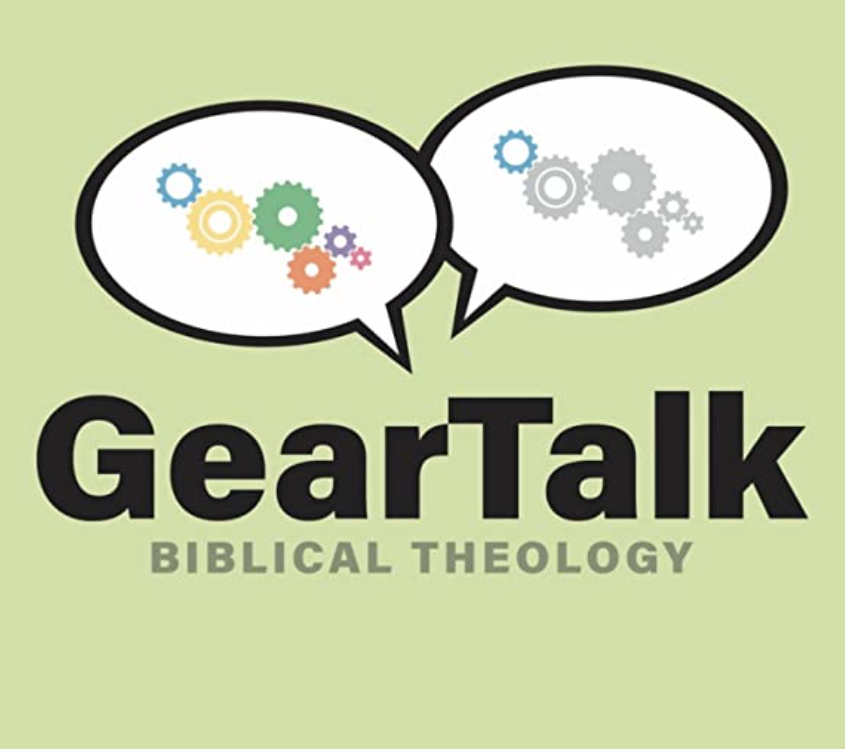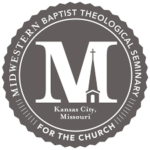The Second Exodus (Part One)
The Second Exodus (Part One)
Transcript
JY: Welcome to Gear Talk, a podcast on Biblical Theology. Today, Jason DeRouchie and Tom Kelby talk about the exodus and the song celebrating that event. Did you know that the biblical authors saw the first exodus as a picture of an even greater exodus to come?
TK: Hi friends. Tom Kelby here. I’m with Jason DeRouchie. Actually I am not with you. Jason, where are you right now?
JD: I am at home in Missouri.
TK: And I’m in Wisconsin. It’s a thunderstorm here. Summer has finally come. Yesterday was 95°. And you’ve had tornadoes, haven’t you?
JD: We have had some tornadoes. Made our way, two different times now, down to our basement. But by God’s grace, no damage. Not only here, but even in our area.
TK: Awesome. Today our title is the Second Exodus. There was obviously a first exodus and this really goes along with something we talked about before, which was episode 3. What did the prophets know? So we’re going to talk about a second exodus. Before we start, though, can you kind of set the context of Exodus 14 and Exodus 15 because 14 is a story. Exodus 15 is a poem. As a preacher, as a reader of God’s word, what do I do with chunks of the Bible like that? How do I approach this?
JD: Well, in certain instances just like we find in Exodus 14 and 15, or Judges 4 and 5, God gives us a story, a true story, in the form of a narrative. And then he retells that story in the form of poetry. So two different genres that are expressing the same historical realities, just in different ways. And we get an example of how the poetry differs in the book of Exodus. It’s straight proclamation, facts laid down of how God led Israel through the waters and then overcame Egypt in the sea in 14. And then in chapter 15, the language that’s used is much bigger. God stretching out his hand, blowing wind out on the sea, the Egyptians sinking deep into the depths. The language is filled with much more emotion, and it’s designed to move us in fresh ways that maybe the narrative itself didn’t, and to communicate the greatness and the beauty of God.
TK: I think—well, if you’re looking at your Bible, we assume that a lot of you aren’t, you’re driving or something—but they look different too. So chapter 14, the margins in an English Bible at least are squared off. And then you get to chapter 15 and the margins are center justified here, or everything’s indented, I should say. And it looks different. It’s a signal: something different is going on. So we talked, Jason, in episode 3 about what the prophets knew, so Old Testament prophets. One of the things we argued, based on 1 Peter 1, was that they knew about earlier scriptures. So for instance, David would have known about things Moses wrote. So how many prophets would you say Jason knew this song from Exodus chapter 15? Do you have any evidence anybody knew about this one?
JD: Well, this particular song is alluded to in Psalm 118. And it’s alluded to in Isaiah chapter 12. Actually, very the very words are quoted in both of those texts. And then it’s recalled a number of times because the prophets spoke about a second exodus that would be in a similar pattern to the first exodus of Israel getting set free by Yahweh from Egypt. But this new exodus will be greater because it will be led by even a greater Moses figure, the prophet like Moses, whom the Old Testament focuses and associates with the New David, the new King David, whom we know of as Jesus. He will lead a new exodus. And with respect to the prophets, so many of the prophets in the Old Testament, I think all of them—all the writing prophets were aware, all 15 of them were aware of Exodus, the book. They were aware of the story. And many of them recall the original Exodus as a figure or pattern or type of a greater exodus that would be led by a victorious, delivering Messiah.
TK: All right, so let’s give an example. Give us an example—we already mentioned we’re going to Isaiah, so let’s not go there—of a different prophet who refers to this second exodus.
JD: OK, Jeremiah is one, Jeremiah 23:5, he says, “Days are coming when I’m going to raise up for David a righteous branch.” The original David, God will raise up for him—in accordance with the promises that God made in 2 Samuel 7—he’s going to raise up a righteous branch. That is new creation imagery. But the branch is a person and he shall reign as king.
TK: Help us for a second, those of us who are reading English Bibles, we see possibly in our translation the word branch is capitalized. Can you help us out—why the translators would have done that. What are they saying there?
JD: They’re saying that this branch is indeed a person. And it’s a unique person that we associate with, from other texts, with an anointed figure, an anointed ruler whose name is Jesus. So in capitalizing branch there, the translator simply noting this is a specific person who has a very special place in the story.
TK: I love it. I love it. All right. Let’s move on.
JD: So this branch is going to reign as king, execute justice and righteousness, and in his days we’re told both Judah and Israel will be saved. But then it says, “Behold, the days are coming, declares the Lord, when they shall no longer say, ‘As the Lord lives, who brought up the people of Israel out of the land of Egypt,’ but”—now they will say—”as the Lord lives, who brought up and led the offspring of the house of Israel out of the north country and out of all the countries where he had driven them.’ Then they shall dwell in their own land” (Jer 23:7–8). So the north country is where the exile took Israel and Judah. And so the vision here is that, in a way parallel to the first exodus out of Egypt, there’s going to be a new exodus. It’s not going to be like the first one. It’s going to be a greater one. Rather than coming out of the land of the southwest Egypt, it’s going to bring them out of the north country. But it’s going to be a reversal of God’s judgment on Israel, and it’s being portrayed in the form of an exodus. So that’s just one example.
TK: And this makes sense, then, if the exodus is a major theme the prophets know about it. I just turned to Hosea 1 the end of Hosea 1 and it says verse 11, “The children of Judah and the children of Israel shall be gathered together, and they shall appoint for themselves one head. And they shall go up from the land.” That idea of Hosea has seen again, a second exodus. But if the picture is, there’s a first exodus and a song celebrating it, then if there’s a second second exodus, it shouldn’t be surprising that we would hear the same music from the same song. Do you agree?
JD: I agree, and that’s exactly what we find then in the book of Isaiah. He’s going to set up an echo with the exact same melody line, words of the first exodus and say that those who experienced the second exodus are going to be singing the same music of God’s great saving power. How about we go there to one of Isaiah’s key second exodus texts? Does that sound good?
TK: I think it sounds really good. And if we could have done the same thing in Psalm 118 as well that same thought of a historical reality is being celebrated in a song. And they’re wanting you to say hey, wait a minute, I recognize that too. And I’ve heard that one before. Can you can you set us up a little bit and it’s huge, but take us through Isaiah 1 to 11. Just get us into chapter 12.
JD: Absolutely. So, the key element that’s happening in these chapters is one a stress on Israel living in the dark, and that God is going to bring Messiah—a child king who will bring light. The book opens saying that Israel was a garden that isn’t producing. So they are a deprived, wilted, unproductive garden. But the vision of the book is that God is going to bring a new creation and plant, a new garden. And it’s going to spring forth through the life of an individual Messiah-figure who’s going to be filled with the Spirit. Wherever he goes, God’s presence is resting on him. He’s like a movable temple and through him, in his reign, justice is going to prevail. So when he shows up, it will be like light intruding into darkness. Isaiah 7 says he is God with us, Immanuel (Isa 7:14). Isaiah, 9, says he is like a light entering into a darkness and he is a child-king whose name is Wonderful Counselor, Mighty God, Everlasting Father, Prince of Peace (Isa 9:2, 6). And then it says that his throne, the increase of his government and of his peace, there will be no end, and the he’ll rest on the throne of David. So he is the fulfillment of the Davidic covenant. And then amazingly, it says his Kingdom will be established throughout the entire world. There will be no end of his rule, and no halting of the peace that he brings about (Isa 9:7). He is going to be a channel of justice. And it’s that figure that Isaiah 11 opens with, focusing on him and celebrating.
TK: I love it, and it obviously—this reminds us of so many things that we hear in the New Testament talking about Israel being fruitless. It reminds us of John 15 and the exact opposite, which is Jesus is the vine and everyone in him bears good fruit. It’s just saying that what was talked about in Isaiah—in opposite fashion there—but the promise here has come true in Christ and in the church.
JD: That’s right. Jesus is the embodiment of fruitfulness and those attached to him become part of the new-creational garden.
TK: All right. So, yeah, work us through chapter 11. So we can get to this song in chapter 12.
JD: Yes, it’s such a beautiful chapter, well worth preaching. We are told that out of the stump of Jesse—Jesse was the original David’s father—there’s going to be a shoot, a new tree is going to grow. And it’s the first sign of new creation. And it’s a person—a person who is endowed with the very Spirit of the Lord. It’s resting on him. And then we learn that he is a ruling figure who’s going to judge rightly in the world. His kingdom is going to be such that it fills the entire planet like a holy mountain that has grown to become all things. And in his day the knowledge of the Lord is going to fill the earth and there’s going to be perfect justice and peace between all peoples, plural.
And then it’s at that point, in verse 10, that we begin to see the first signs of exodus. Verse 10 says, “In that day the root of Jesse”—so he’s no longer just the shoot of Jesse coming forth from him, he was the root of Jesse, that is, he was before Jesse and he’s after Jesse. He is the one who brought forth Jesse and the original David. And then he’s also the offspring of Jesse. This is like a divine figure who becomes man. And he’s going to stand as a signal not just for Israel and Judah, he’s going to stand as a signal for the peoples—plural. When we see peoples in contrast to people we’re talking about all the peoples of the planet in the book of Isaiah. And it says, “The nations are going to inquire of him and his resting place will be glorious.” So it’s intriguing, we have these nations living in hostility against God. And now the Messiah comes. And they are in some way going to be drawn to him. There’s there’s movement in Isaiah’s vision toward the Messiah. And that’s the first inkling of a new exodus. But then it gets very explicit in verse 11, why don’t you take us there, Tom.
TK: So it says, “In that day the Lord will extend his hand yet a second time”—reminding us there must have been a first time—”to recover the remnant that remains of his people, from Assyria, from Egypt, from Pathros, from Cush, from Elam, from Shinar, from Hamath, and from the coastlands of the sea. He will raise a signal for the nations, and will assemble the banished of Israel, and gather the dispersed of Judah from the four corners of the earth” (Isa 11:11–12). There’s some words there I have in my Bible, circled and little notes like even that idea he’s gathering the dispersed, meaning they’re scattered people—God’s scattered people—he will be gathering back in this second exodus here.
JD: Yes, there—so we noted in verse 10, it was the peoples plural who would be drawn to the Messiah. In verse 11, it’s the people. So in the exile, when God brought judgment on Israel and Judah, he scattered them. But now what’s happening is that the scattered ones or the dispersed ones are going to be drawn in. But not only is it Israel and Judah, it’s those from the nations who are also drawn in. Then, with explicit exodus language, verses 15 and 16 send a signal: read this as new exodus. The second time that it said he’ll draw his hand out a second time. You were right the first time is, according to Isaiah, the first exodus that is now being trumped by an even greater one. Take us to verses 14 and 15. I’m sorry, verses 15 and 16.
TK: “And the Lord will utterly destroy the tongue of the Sea of Egypt, and will wave his hand over the River with his scorching breath and strike it into seven channels, and you will lead people across in sandals. And there will be a highway from Assyria for the remnant that remains of his people, as there was for Israel, when they came up from the land of Egypt” (Isa 11:15–16). So, the the end of that is saying this will be just like what happened to Israel when they came up from Egypt, except there’s some notable differences, but the place in the world is different and there’s more peoples involved.
JD: Right. The Messiah is raised up as a signal to the peoples of the planet, the nations. So they’re looking at where that banner has been lifted and they’re being drawn to him. And then Israel and Judah, that is ethnic Israelites, are a part of this movement from all the different reaches of the globe. And God is using imagery of the exodus. He’s going to make the sea such that now people can walk upon it again. Walk across through the waters in sandals and they’re going to be drawn to God. And then we come, finally, to chapter 12, and it’s 6 verses that really recall a song.
TK: And again, I think we should be anticipating this—having read exodus and read the events in Exodus 14—we should be thinking, I wonder if they’re going to play the same song that we saw in the first exodus. But a second verse, almost, if you want to say it expanded, changed in some way. I think as readers, as preachers, we should be looking for something here.
JD: Yes, yes. Isaiah has set it up for us, and he centered it on the salvation the Messiah would bring. Chapter 12:1, “You will say in that day: ‘I will give thanks to you, O Lord, for though you were angry with me, your anger turned away, that you might comfort me. Behold, God is my salvation; I will trust and not be afraid for”—and here it is—”the Lord God is my strength and my song; he has become my salvation” (Isa 12:1–2).
TK: I’m going to turn to Exodus 15 right now. So Exodus 15:2 I read, “The Lord is my strength and my song and he has become my salvation.”
JD: There it is. Isaiah intentionally shapes a song that’s associated with what we call the new exodus—the days of the Messiah when sin would be overcome, when we would be reconciled to God, when we would enjoy the very presence of God through the person of his saving One. In that day that you and I are now enjoying, a song will be sung, and that song will include recollections of the first exodus. “I will sing to the Lord, for he has triumphed gloriously; the horse and the rider he has thrown into the sea. The Lord is my strength and my song; he has become my salvation” (Exod 15:1–2). That’s where the music in Exodus 15 began and Isaiah reaches back there to help people recognize there is something greater happening today that the first exodus anticipated.
TK: So Jason, you would say that if you asked Isaiah, Isaiah, tell me about the exodus, he would have a lot more to say than merely describing Moses leading the Israelites out of Egypt.
JD: Oh, he believed that it was foreshadowing a greater deliverance, and this makes sense. This makes significant sense when we go back to the book of Exodus itself, because Pharaoh is portrayed as a serpent king—a serpent in the same imagery, and even the same language of Genesis chapter 3. In fact, Genesis 3 uses the word serpent of the great evil one. And the very next time we see it in the Bible is in Exodus chapter 4. Moses is told stretch out your hand after he threw his staff on the ground and it became a serpent. “Stretch out your hand Moses and pick it up by the tail” (Exod 4:4). And just a few verses earlier, God had used the exact same verb and said I will stretch out my hand against Pharaoh and against Egypt (Exod 3:20)—that is what Moses’s staff represented when it turned into a serpent, and he as God’s arm was to reach out and grab it—that’s what God would do to Pharaoh.
Pharaoh is the serpent king. And if we recognize that when we read the book of Exodus, then when God goes to judge him, it’s a picture of the judgment that was already mentioned in Genesis 3:15 that a certain son—offspring of the woman—would strike the head of the serpent, bringing a death blow upon him. It’s a picture. That image is pictured already in the exodus itself, that when God overcomes Pharaoh and the Egyptians, the serpent-king and his people, it’s a foreshadowing of a greater deliverance that God had already predicted, and that Isaiah recognized and identified with the Spirit-empowered child-King who would reign and rule and bring justice to the world.
TK: Jason, how would I, if I’m just reading through Isaiah, how would I know he’s referring—I should go back to Exodus 15. Just practically, how would I do this?
JD: Well, one of the things I try to do as often as I can, and it’s happening all the time, I’m reading a verse and I’m looking in my in my Bible—I have a Bible that has footnotes, elevated numbers or letters that send me to the margin—and so I want to track those because the translators have even done more. They’ve tried to help me as the reader understand how my whole Bible is tied together. And even if I might not be aware of a quotation or an illusion, someone who studied this book far more than I have identified one, recognized an illusion or a quotation, and so they put a little footnote in the text.
And if we were reading Isaiah chapter 12, when we get to Isaiah 12, my ESV has a little raised footnote right before “The Lord God is my strength and my song, and he has become my salvation”—a little footnote that sends me to the margin, and in the margin it says Exodus 15:2, Psalm 118:14. And all of a sudden, that’s a signal for me as an interpreter of scripture: well, I’m going to go look and see. And all of a sudden, if I went to those texts, I would see the exact same clauses laid out right there in the text. And it should raise in my mind the thought, huh, I wonder if Isaiah has Moses in mind. I wonder if the psalmist in Psalm 118 was actually thinking about the exodus. And in Isaiah it’s absolutely clear because he had, just two verses earlier mentioned Israel’s departure from the land of Egypt. He has the exodus in mind and he said because when you and I experienced the saving work of the Messiah, we’re going to be singing Yahweh God is my strength and song, and he has become my salvation. It should be on our lips today. Our celebration should be real.
TK: As we close here, Jason, can you give us a couple of comments about Revelation 15, because this isn’t the last time we hear this song, and when we say Old Testament prophets were reading about earlier things, clearly New Testament apostles were doing the same the same thing.
JD: They were. And you’re right, we have in Revelation 15 another recollection. But now you’ve got John, who’s able to not only build on Exodus, he’s able to build on Isaiah. And he opens up chapter 15, the heading in my Bible says the seven angels with the seven plagues. Well, that word plagues automatically recalls the exodus.
TK: Would you say that John is purposefully trying to get us to think about the exodus when he talks about the plagues that we see in revelation?
JD: I think he is. I think he wants us to remember that those plagues were brought against a serpent-like king. Pharaoh is the offspring of the serpent in contrast to those who were hoping in the offspring of the woman. He’s a picture of the devil who seeks to steal, kill and destroy, who sought to murder God’s people. Just like Satan was doing in the garden, that’s what Pharaoh was trying to do in killing the son—that’s what Israel the nation is called my, first-born son—and that’s what he was trying to do. And in the same way the beast, the evil dragon in Revelation—that’s exactly what they’re trying to do: destroy the son, the Messiah, and destroy his offspring.
I think we’re supposed to see a pattern. That’s what a type is. We’re talking about typology today. And typology is simply the way that God uses biblical events or persons or institutions—events like the exodus, persons like Moses, or institutions like the temple—to anticipate a greater exodus, a greater Moses, a greater temple. And God uses these Old Testament figures to foreshadow and even clarify something about the person and work of Jesus.
And yes, I think that John is alluding here, calling his readers think about God’s judgment against Egypt. We even see an added element when in verse two it says, “I saw”—after he mentioned the seven plagues in verse one—”I saw what appeared to be a sea of glass mingled with fire.” So you’ve got plagues, you’ve got a sea, and then he goes further in verse 3 and those who were standing by the peaceful sea—it’s no longer chaotic; it’s no longer a sea of judgment. Judgment has happened, and the sea is now level. And God’s people are standing alongside the peaceful sea, just like Israel stood alongside the peaceful shoreline after God destroyed Egypt. And it says the new people of God sing the song of Moses, the servant of God, and the song of the Lamb. And then music is proclaimed, “Great and amazing are your deeds, O Lord God the almighty! Just and true are your ways, O King of the nations! Who will not fear the Lord and glorify your name? For you alone are holy. All nations will come and worship you” (Rev 15:3–4).
There’s no explicit word for word statements, but there’s a number of illusions that recall the original song of Moses at the sea. Holy is his name. There is no one holy like the Lord—the Israelites saying after Egypt was destroyed. So you have the plagues. You’ve got a quieted sea and you’ve got a song of Moses and it seems to me this is part of that new song that Isaiah in Isaiah 12 had already envisioned would be sung by those that the Messiah would save.
TK: It is so good to be able to read the first song and know that wasn’t it. It didn’t end there. And with the people who shortly after began disobeying, that was a picture of a far greater a second exodus. And that we can be part of that. That this truly does become my song, my people. And it’s actually my savior’s song. It’s the song of the Lamb. I have a note in my Bible—I wrote it in, I don’t know who I heard it from—but where it says this: “They sang the song of Moses, the servant of God, and the song of the Lamb.” And the note just says the song of Moses is the song of the Lamb that the and there is the way it’s working in Greek is really a signal that that’s what it is. The Song of Moses is actually the song of the Lamb.
JD: It’s a single song.
TK: It’s a single song. It always was that.
JD: Yes, that’s awesome. The original music anticipates the greater triumph of the deliverer—a new Moses who is the Lamb. I love it.
TK: All right, all right. You want to wrap this up, Jason?
JD: Well, friends, we will talk more about typology in the future. We’ll talk more about the exodus in the future, but I’m glad you’ve joined us for this episode of Gear Talk.
JY: Thanks for joining us for Gear Talk. If you have questions about Biblical Theology you’d like us to address on future episodes, e-mail us at [email protected]. Also, check out HandstothePlow.org for resources designed to help you understand the Bible and its teachings.






